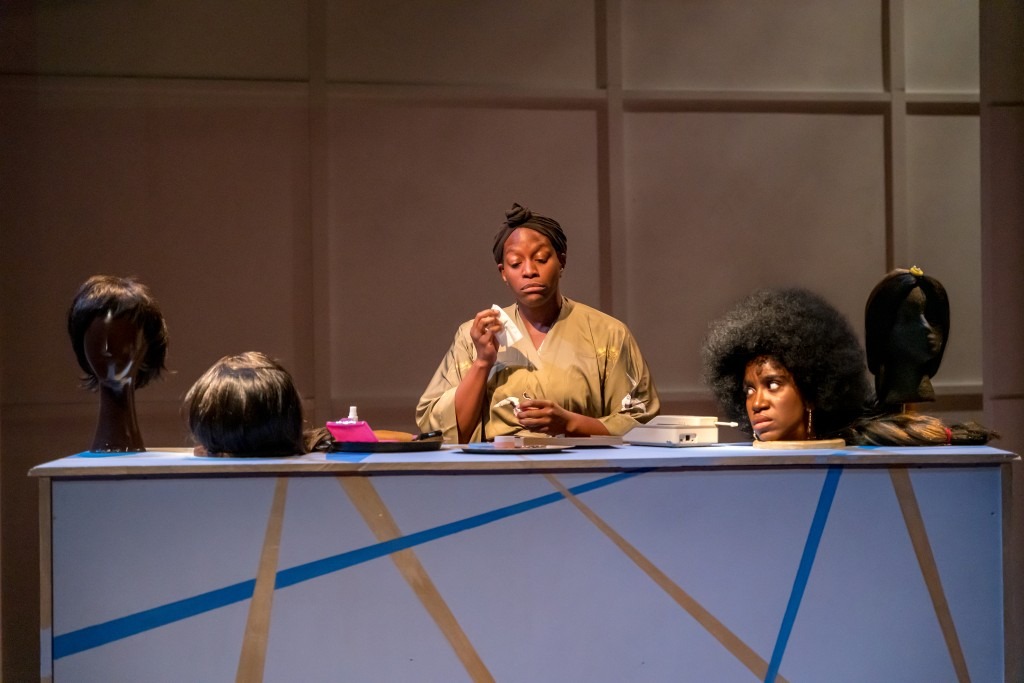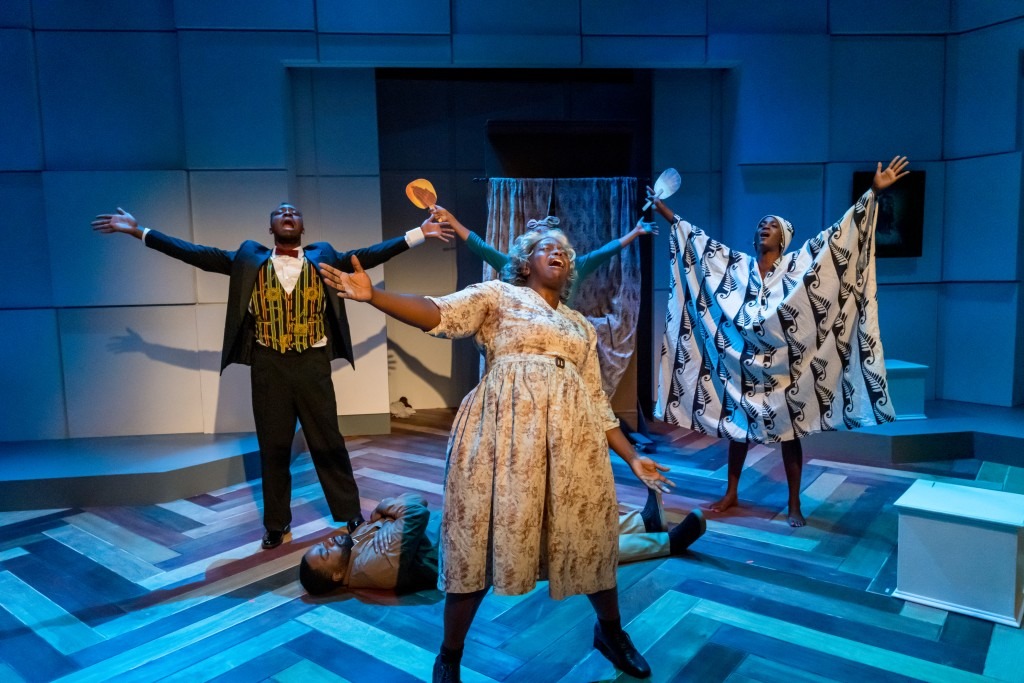By Jake-ann Jones
. . .
The Colored Museum
Highlights Black Experience Through Satire
. . .
Through November 27
American Stage
Details here
. . .
George C. Wolfe’s The Colored Museum under masterful direction by Keith Arthur Bolden handily reveals why the play catapulted Wolfe into the theatrical canon.
Wolfe’s now-classic satire on Black stereotypes and identity takes on subject matter as loaded as the Middle Passage, Black women’s hair, and self-hatred. The play’s humor makes it palatable for the audience to digest, even as Wolfe ponders our racial and social realities – and our ability to cope and remain halfway sane – with a no holds barred attack on our senses.

The production reveals the brilliance of Wolfe’s writing and its tongue-in-cheek campiness, as it takes on the neurosis engendered by being Black in America. The plays careens through the highs and lows of Black America’s “colored contradictions,” performed so flawless by the cast of five you don’t even notice there’s no intermission in the 90-minute evening.

The actors each flip through a number of characters with depth and dexterity. Particularly memorable are Jemier Jenkin’s desperate stewardess “Miss Pat”, Alicia Thomas’ “LaLa”, Yewande Odetoyinbo’s “Aunt Ethel”, Brandon Burditt’s “Walter-Lee” and Jermaine Robinson’s “Miss Roj.”

The play also features local cultural staple Senegalese percussionist Malick Faye, who audiences may recognize from his work with Clearwater’s Artz4Life and its Dundu Dole African Ballet troupe.

Bolden, who is also an actor, shared in his notes on the production. “This play was the first play I performed in. I was 18 years old, fresh from home, and a journalism major. This play, the provocative nature of its satirical pieces, and the fact that this satire was unapologetically Black, changed my life. I found myself, at a young age, having heightened discourse with professors in social science, political science, biology, administrators, you name it, from all over the campus.”

The play’s energy and urgency is ‘on go’ from the first moments of Faye’s drumming through the final moments of the ensemble’s performance. The vibrancy of the actors reminds one of why live theater is such a different experience than watching something onscreen – Robinson’s “Miss Roj,” for example – brims with so much flair and attitude that, even as the character’s cool crumbles under the weight of being who they are, where they are, and when they are, the audience is held aloft by the actor’s full-frontal Black Bravado.

“I think it’s the fact that you can’t run away from it,” Bolden offers when asked about the impact of theater versus TV or film. Noting that getting up and leaving in a theater setting is very different that walking away from the TV set, Bolden muses that the impact of theater is more deeply felt – and demands that we remain in the experience.
“You don’t want to stand out as someone who can’t stay in the kitchen – who can’t stand the art – even if they don’t agree with it.”

Harlen Penn’s scenic design brings a fluidity to the evening as set pieces glide from vignette to vignette. The evening also features costumes by veteran designer Saidah Ben Judah, lights by McKenna Ebert and sound design by Tyrese Pope.
Photos by Chaz D. Photography




